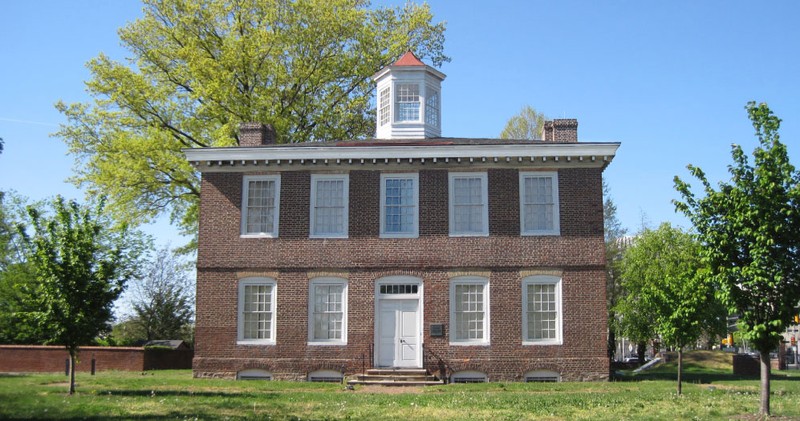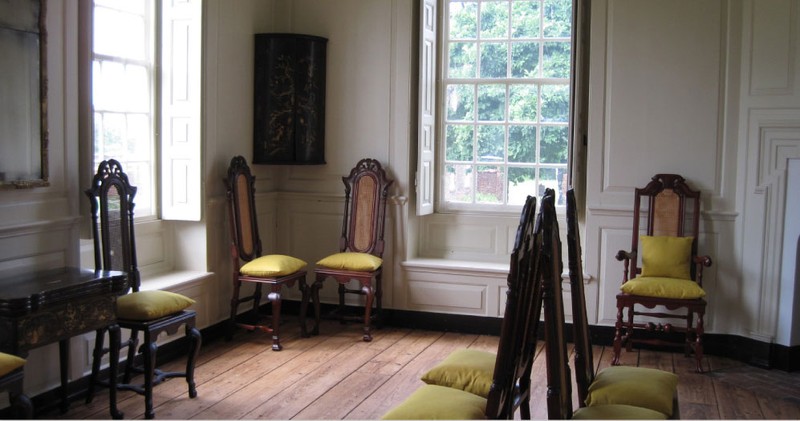William Trent House and Museum
Introduction
Text-to-speech Audio
This house museum is the oldest standing structure in Trenton, New Jersey. Constructed for Trenton's founder in William Trent in 1719, the home contains exhibits that reflect the colonial period and the growth of the Trenton. The stately home passed though some of the most influential families before the property was donated in 1929 for the purpose of creating a museum.
Images
The front Of the William Trent house.

A portion of the interior of the William Trent House.

Backstory and Context
Text-to-speech Audio
This historic home was built in 1719 by William Trent and it is the oldest standing structure in the city of Trenton. William Trent was born circa 1653 in Scotland and he emigrated to America with his brother in 1682. He appeared on the Philadelphia tax rolls as of 1693. Trent made a fortune as an importer of many commodities including wine and rum. He was also involved in the buying and selling of enslaved people and indentured servants. Trent built this plantation estate and the surrounding community came to be known as "Trent Town" It later became officially incorporated as Trenton. William Trent died on Christmas day 1724 and his son James inherited his entire estate. This was contested by Mary Coddington Trent. She sued for her dower rights and won, collecting rents on Trent's properties and profits from his mills for several years after Trent's death.
William Trent Jr. was born circa 1715 in Philadelphia, four years before the William Trent Sr. built the Trenton home. William Trent entered the trading business and is best-known for his involvement in the French-Indian War as a Captain of the Virginia Regiment. He was promoted to Captain at the beginning of the war in 1754 served under young Lieutenant Colonel George Washington, the future inaugural President of the United States.
In 1760, Trent became a member of a trading firm in Fort Pitt at the confluence of the Allegheny River, Monongahela River, and Ohio River. Fort Pitt was England's attempt to gain control over the trade with area tribes and wrest control over the area from the French. According to the Historical Society of Pennsylvania, "During the summer of 1763, while stationed at Fort Pitt, William Trent kept a journal and orderly book, which together present one of the most detailed and complete accounts of the Indian siege on the British settlements." William Trent died five years later in 1787.
After the passing of William Trent senior, a number of Trenton's most prestigious families including three New Jersey Governors, a physician, and a colonel lived in the home. In 1929, Edward Ansley Stokes gave the property to the City of Trenton. The house was restored to its original appearance in the early 1930s and it has served as a local history museum since 1939.. The building was added NRHP (National Register of Historic Places) in 1970.
Sources
“Edward Ansley Stokes and the William Trent House.” Historian's Blog, riverviewcemetery.blogspot.com/2015/12/edward-ansley-stokes-and-william-trent.html.
“William Trent House Historical Marker.” Historical Marker, 16 June 2016, www.hmdb.org/marker.asp?marker=4153.
“William Trent.” Exploring Diversity in Pennsylvania History, The Historical Society Of Pennsylvania, hsp.org/sites/default/files/attachments/trentbiographicalnote.
